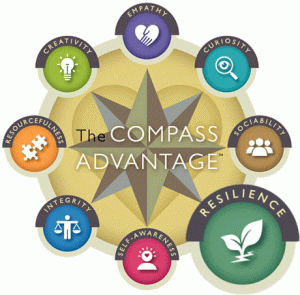Does Your Classroom Cultivate Student Resilience?
Children who develop resilience are better equipped to learn from failure and adapt to change. Teachers should also address parent expectations of success and failure.
Over 100 years ago, the great African American educator Booker T. Washington spoke about resilience:
Research has since established resilience as essential for human thriving, and an ability necessary for the development of healthy, adaptable young people. It's what enables children to emerge from challenging experiences with a positive sense of themselves and their futures. Children who develop resilience are better able to face disappointment, learn from failure, cope with loss, and adapt to change. We recognize resilience in children when we observe their determination, grit, and perseverance to tackle problems and cope with the emotional challenges of school and life.
The Capacity to Rebuild and Grow From Adversity
Resilience is not a genetic trait. It is derived from the ways that children learn to think and act when faced with obstacles large and small. The road to resilience comes first and foremost from children's supportive relationships with parents, teachers, and other caring adults. These relationships become sources of strength when children work through stressful situations and painful emotions. When we help young people cultivate an approach to life that views obstacles as a critical part of success, we help them develop resilience.
Many teachers are familiar with Stanford professor Carol Dweck's important work with growth mindsets, a way of thinking that helps children connect growth with hard work and perseverance. Educator David Hochheiser wisely reminds us that developing growth mindsets is a paradigm for children's life success rather than a pedagogical tool to improve grades or short-term goals. Simply put, it's a way of helping children believe in themselves -- often the greatest gift teachers give to their students.
Resilience is part of The Compass Advantage™ (a model designed for engaging families, schools, and communities in the principles of positive youth development) because the capacity to rebuild and grow from adversity is a key factor in achieving optimal mental and physical health. Linked by research to happiness and the other abilities on the compass, resilience is one of the 8 Pathways to Every Student's Success.

The ability to meet and overcome challenges in ways that maintain or promote well-being plays an essential role in how students learn to achieve academic and personal goals. Resilient young people feel a sense of control over their own destinies. They know that they can reach out to others for support when needed, and they readily take initiative to solve problems. Teachers facilitate resilience by helping children think about and consider various paths through adversity. They also help by being resources, encouraging student decision-making, and modeling resilient competencies.
Five Ways to Cultivate Resilience
1. Promote self-reflection through literary essays or small-group discussions.
Short written essays or small-group discussion exercises that focus on heroic literary characters are an excellent way, particularly for younger students, to reflect on resilience and the role it plays in life success. After children have read a book or heard a story that features a heroic character, encourage them to reflect by answering the following questions. (See the Heroic Imagination Project for additional resources and videos.)
- Who was the hero in this story? Why?
- What challenge or dilemma did the hero overcome?
- What personal strengths did the hero possess? What choices did he or she have to make?
- How did other people support the hero?
- What did the hero learn?
- How do we use the same personal strengths when we overcome obstacles in our own lives? Can you share some examples?
2. Encourage reflection through personal essays.
Written exercises that focus on sources of personal strength can help middle and high school students learn resilience-building strategies that work best for them. For example, by exploring answers to the following questions, students can become more aware of their strengths and what they look for in supportive relationships with others.
- Write about a person who supported you during a particularly stressful or traumatic time. How did they help you overcome this challenge? What did you learn about yourself?
- Write about a friend that you supported as he or she went through a stressful event. What did you do that most helped your friend? What did you learn about yourself?
- Write about a time in your life when you had to cope with a difficult situation. What helped and hindered you as you overcame this challenge? What learning did you take away that will help you in the future?
3. Help children (and their parents) learn from student failures.
In her insightful article Why Parents Need to Let Their Children Fail, published in The Atlantic, middle school teacher Jessica Lahey touched on a topic near and dear to every teacher's heart: How do I teach students to learn and grow through failure and setbacks when their parents are so intent on making them a shining star? The truth is that learning from failure is paramount to becoming a resilient young person. Teachers help when they:
- Create a classroom culture where failure, setbacks, and disappointment are an expected and honored part of learning.
- Establish and reinforce an atmosphere where students are praised for their hard work, perseverance, and grit, not just for grades and easy successes.
- Hold students accountable for producing their own work, efforts from which they feel ownership and internal reward.
- Educate and assure parents that supporting kids through failure builds resilience -- one of the best developmental outcomes that they can give their children.
4. Bring discussions about human resilience into the classroom.
Opportunities abound to connect resilience with personal success, achievement, and positive social change. Expand discussions about political leaders, scientists, literary figures, innovators, and inventors beyond what they accomplished to the personal strengths they possessed and the hardships they endured and overcame to reach their goals. Help students learn to see themselves and their own strengths through these success stories.
5. Build supportive relationships with students.
Good student-teacher relationships are those where students feel seen, felt, and understood by teachers. This happens when teachers are attuned to students, when they notice children's needs for academic and emotional support. These kinds of relationships strengthen resilience. When adults reflect back on teachers who changed their lives, they remember and cherish the teachers who encouraged and supported them through difficult times.
Do you have a teacher who played this role in your own life? What do you remember about him or her?
